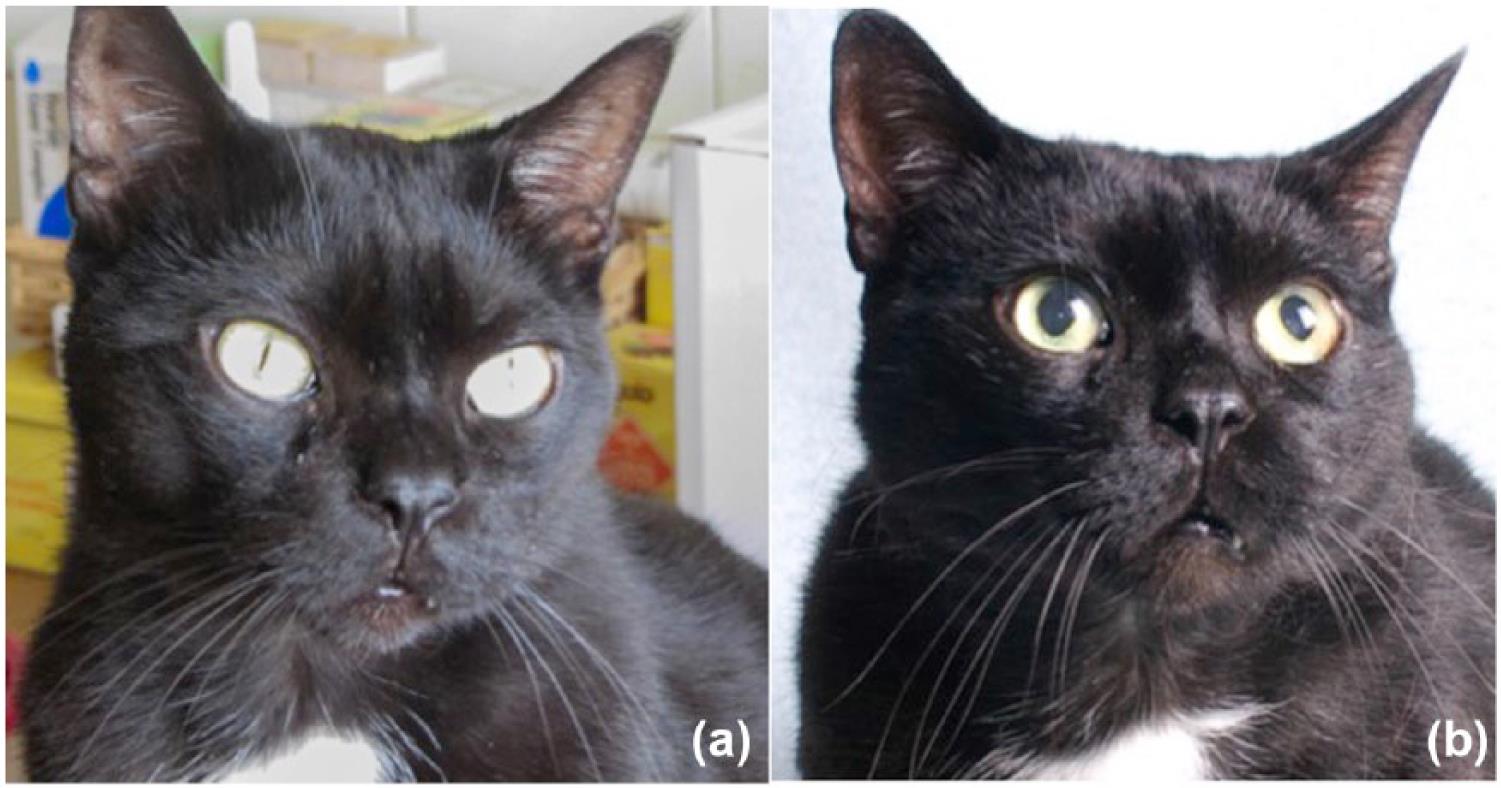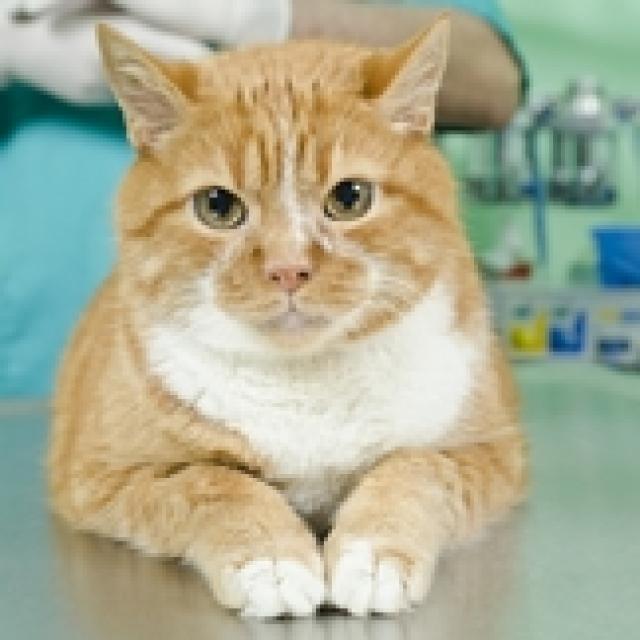what causes acromegaly in cats
The result of this overproduction is that a cats body tissue is stimulated and grows excessively causing all the damage. It can occur in adult and aged cats and is usually associated with neoplasms such as functional pituitary macroadenoma of somatotropic cells.

Pdf Acromegaly In A Non Diabetic Cat
Acromegaly is the term used in human medicine to describe a condition resulting from chronic excessive growth hormone GH secretion.
. Acromegaly is a relatively rare hormonal condition. Acromegaly is a relatively rare cause of. Therefore polydipsia polyuria and polyphagia are the most common presenting signs.
The pituitary gland secretes the growth hormone thanks to the stimulation of another. In a poorly regulated diabetic cat lack of a typical acromegalic appearance prognathism enlarged feet does not negate the importance of testing for this condition by measuring serum levels of IGF-1 and performing advanced imaging of the brain. No single test for the diagnosis of feline acromegaly exists.
Acromegaly in cats. 1 7 However these features appear gradually and often the only abnormality recognised in acromegalic cats is the presence of diabetes. Acromegaly should be considered in any diabetic cat with.
Differentiate cats with acromegaly from clinically normal cats were limited to only single case reports and a few small series of cats457 In additionsome investigators identified high serum IGF-1 concentrations in a subset of cats with diabetes not suspected to have acromegaly especially cats treated with long-term insulin therapy9. Pituitary Tumors in Cats What is feline acromegaly. Acromegaly is a syndrome in cats caused by a tumor in the brain specifically the pituitary gland that.
The condition is oftentimes difficult to diagnose as the symptoms are. Diagnosing feline acromegaly starts with a clinical suspicion based on a thorough history signalment and clinical signs. Other signs that acromegaly may be present include a broadened face growing paws and a protruding jaw or growing lengthening teeth and gums.
Acromegaly is a rare syndrome resulting from the excessive production of the growth hormone somatotropin by tumors in the anterior pituitary gland of adult cats. There are three basic methods of treating Acromegaly itself. Acromegaly due to excessive hormone production in the brain is more common in cats than dogs.
Excessive growth hormone in cats is also called acromegaly or hypersomatotropism. This tends to increase in size creating problems even at. Many of the abnormalities noted in the complete blood counts serum chemistry profiles and urinalyses of affected cats reflect concurrent diabetes mellitus.
This is most often caused by an abnormal growth or tumor in the pituitary gland and the hormones may vary somewhat. The term hypersomatotropism HST rather than acromegaly may be appropriate when describing the condition resulting from chronic excessive GH secretion in cats because growth hormone-induced soft tissue and bone. It can be caused by excessive hormone production in the brain or in mammary gland breast tissue.
The tumour is usually benign and very slow growing. Radiation therapy either traditional treatment or Stereotactic Radiation Therapy SRT. As previously mentioned acromegaly develops because too many growth hormones are produced in a cats system.
Acromegaly is an uncommon cause of insulin resistance in cats. In cats reported clinical features of acromegaly include prognathia inferior broad face enlarged paws hypertrophic cardiomyopathy abdominal organomegaly respiratory stridor and increased body weight. Acromegaly should be considered as a possible cause of difficult to regulate and high dose diabetic cats.
Feline acromegaly has its origin in an adeno-hypophyseal lesion or an adenoma responsible for deregulation in the production of GH the growth hormone. Net weight gain of lean body mass in cats with uncontrolled diabetes mellitus is a key sign of. Feline acromegaly is also called feline hypersomatotropism.
Acromegaly is an endocrine disease caused by a tumour in the pituitary gland in the brain which secretes excessive amounts of growth hormone GH. In dogs it is usually related to an increase in se. The earliest witnessed signs tend to be those of unregulated diabetes mellitus.
Acromegaly in Cats Causes. This is true for acromegaly in other species as well except in the case of dogs. It is a somewhat rare condition which occurs when the cats pituitary gland located at the base of the brain grows a.
Causes of acromegaly in cats. Including pituitary tumors that cause feline acromegaly allowing for a non-invasive approach to treatment that has few if any short term side effects. Polyuria and polydipsia as well as nocturia and urinary incontinence.
Affected cats can develop gradual changes in their appearance but because the disease develops over a. This is because growth hormone antagonizes the effect of insulin leading to high blood sugar levels. Acromegaly is a condition that comes about when something affects your cats pituitary gland and causes it to secrete more growth hormones than are necessary.
Photo AdobeStock Acromegaly in cats is mainly caused by the presence of a pituitary adenoma that is a non-malignant tumor but productive responsible for the overproduction of growth hormone. Medical treatment using pituitary inhibitors. Feline acromegaly occurs in older cats 814 years old and appears to be more common in malesClinical signs of uncontrolled diabetes mellitus are often the first sign of acromegaly in cats.
Acromegaly in cats is mainly caused by the presence of a pituitary adenoma that is a non-malignant but productive tumor responsible for the overproduction of growth hormone. Clinical signs of this syndrome are a result of the hormones direct catabolic breaking down and indirect anabolic building up effects. Acromegaly is an endocrine disease that leads to elevated production and secretion of growth hormone GH.
This treatment is not used often today. To be clear cats with diabetes are not developing acromegaly. When growth hormone levels get too high it interferes with how insulin works in the body.
One of the most distinctive characteristics of acromegaly is that it is diagnosed almost exclusively in cats with diabetes mellitus. The anabolic effects meanwhile are. Removal of the tumour and pituitary gland or hypophysectomy.
Acromegaly occurs as a result of excessive growth hormone GH production.

Feline Acromegaly Endocrine System Msd Veterinary Manual

A Male European Shorthair Cat At A 11 Years Of Age And At B 14 Download Scientific Diagram

Feline Acromegaly The Keys To Diagnosis

Feline Acromegaly Like Humans A Tumor Most Likely Located On The Pituitary Gland Produces Too Much Growth Hormones Igf 1 Gh Feline Vet Tech All About Cats

Acromegaly In Cats Symptoms Diagnosis And Treatment

Acromegaly In Cats The Veterinary Nurse

Acromegaly In A Non Diabetic Cat

Pharmacological Treatment With Cabergoline In Three Cats With Acromegaly

Acromegaly In Cats Rare But Probably Underdiagnosed Petmd

Acromegaly In Cats The Veterinary Nurse

Acromegaly In Cats The Veterinary Nurse

Acromegaly In Cats The Veterinary Nurse

Diagnosis Feline Acromegaly Tufts Catnip

Feline Acromegaly Sarah S First Hand Experience With Her Cat Meows N Paws

Feline Acromegaly An Uncommon Disease Vetcall Q Superstore Qld


